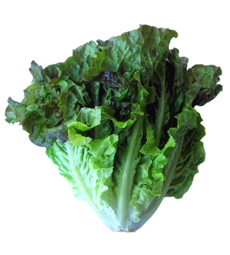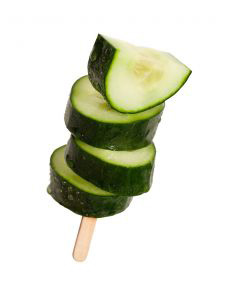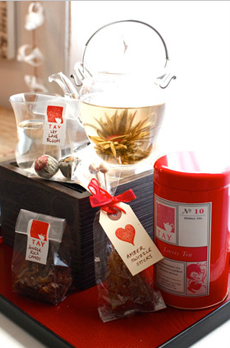|
8. Lettuce…is tired of being relegated to salads! This is one you may have seen at restaurants, but few people try at home.
Start with a few heads of romaine; pull off the loose outer leaves, trim the stem (but leave it intact to hold the heart together) and split the head lengthwise. Brush the insides with olive oil and sprinkle generously with salt and pepper, then put the romaine on a hot grill (or in a grill pan, in a pinch) for about a minute—just until you have solid grill marks.
Let them sit for a minute, then enjoy. The char is a nice contrast to the lettuce’s natural flavor, and everything ends up tasting, believe it or not, buttery! You’ll never look at your greens the same way again.
|
|

I’m romaine. Grill me! Photo courtesy PachD.com. |
9. Raw nuts…are for squirrels! You may not think that a handful of nuts can be changed all that much, but believe it or not, roasting nuts makes a huge difference. Nuts contain good fats and oils, and roasting them for 10-15 minutes at 350°F releases some of those oils, giving them a richer, almost buttery flavor.
When you roast nuts at home, you will really get a sense of what a difference it makes. Toss them in a little olive oil first and then sprinkle with your favorite spices: cayenne, cumin, chili powder, coriander or whatever you like. Just remember to let them cool a bit after they come out to get back to their optimal crunchiness.
You can heat store-bought, pre-roasted nuts in the oven, which is sort of like re-roasting them, but only for a short amount of time or they may burn. You can (and should), however, roast nuts that have been blanched or that are raw, which is how many store-bought nuts come packaged.
10. Steak…tartar at home! Few people are bold enough to serve raw meat in their own homes; it’s usually thought of as one of those things best left to restaurant chefs with the know-how to pull it off. But believe it or not, steak tartare is one of the easier things you can make. After all, it’s just mixing things together in a bowl and letting the flavors mingle.
Just make sure your beef is top quality; sirloin or tenderloin are good options. Grind it yourself, or get it ground by a quality butcher who has a grinder that isn’t used for pork (tell the butcher it’s for tartare). I personally prefer the beef chopped into very small, uniform pieces as opposed to ground. Yes, it’s more work, but I think the texture is much more appealing and has less of a “raw meat” feel to it.
To make a classic steak tartare, combine the following in a large mixing bowl: 1 pound of ground/chopped beef, 1 teaspoon whole grain mustard, 1/2 teaspoon (or more if you prefer) of Tabasco or other hot sauce, 1 teaspoon Worcestershire sauce, 1 minced shallot, 1 teaspoon brandy, 1 egg and salt & pepper (preferably white) to taste. Cover and let it sit, refrigerated, for at least 30 minutes to allow the flavors to mingle; then serve with toasted baguette slices or toast points. I like to drizzle the tartare with a touch of fine olive oil when serving.
There’s the beef—for today, at least.
|








